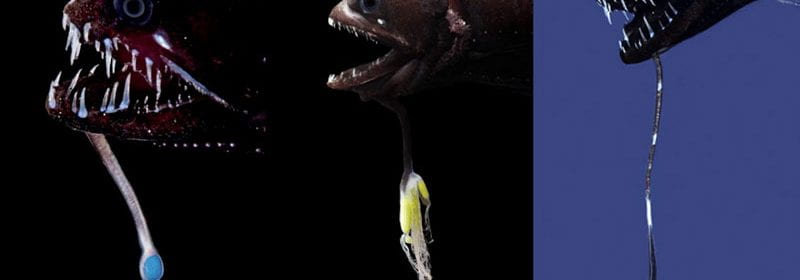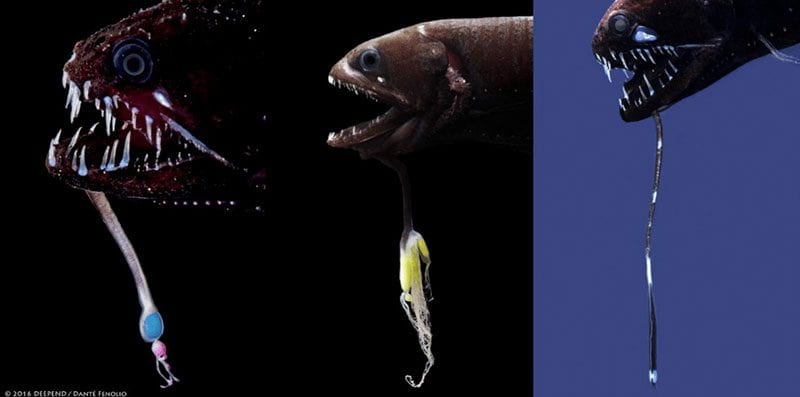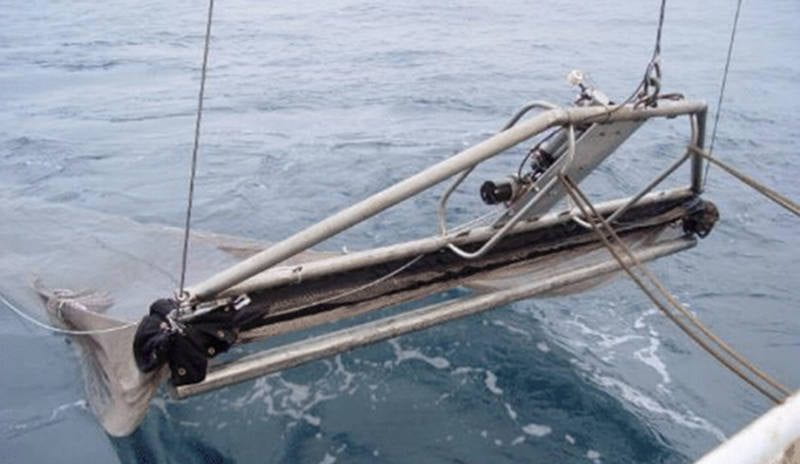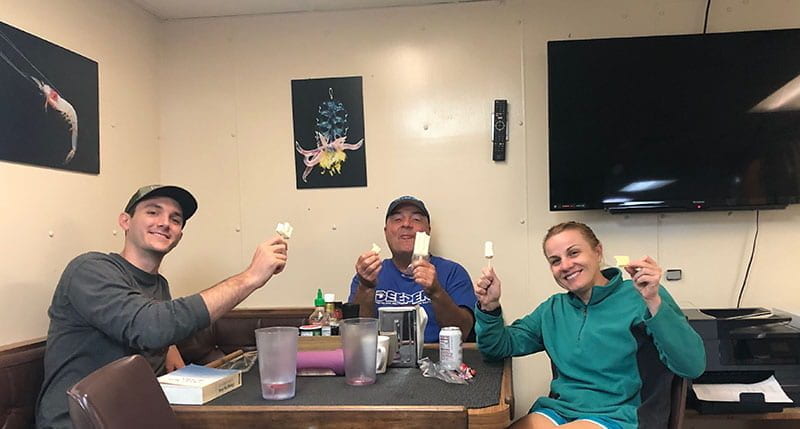Halmos College Researchers Explore Light and Life Below the Ocean’s Twilight Zone


Three species of bathypelagic dragonfishes (Stomiidae) displaying the range of shapes and colors of chin barbels. Image courtesy of Journey into Midnight: Light and Life Below the Twilight Zone.
From June 8-22, 2019, a team of NSU researchers was exploring the water column in some of the deepest parts of the Gulf of Mexico to determine what happens to deep-sea animals when a very important constraint is taken away from them – light. The scientists were making observations and collecting samples for further study on the characterization of visual systems, bioluminescence, and fluorescence of organisms living below 1,000 meters (3,280 feet), in the bathypelagic (midnight) zone. Participating in this research are Halmos faculty members Tamara Frank, Ph.D. and Tracey Sutton, Ph.D.
Frank is collecting live animals using 9m2 Tucker Trawl with a carefully designed collecting vessel at the end of the net, called a cod-end. The cod-end is constructed of three-quarter-inch thick PVC pipe and closes via ball valves when the net closes. The net is remotely opened at depth, and while it is fishing, the ball valves at either end of the cod-end are open, and animals are trapped inside in a mesh bag. When a signal is sent to close the net, the ball valves on the cod-end snap shut, trapping animals inside the cod-end in water at their normal ambient temperatures. The thick PVC walls insulate the water against temperature changes on the trip to the surface.
“Animals without air-filled spaces, like fish without swim bladders, crustaceans, and squids, can handle the pressure, but they can’t handle the temperature changes. At their normal depths, the temperature is around 7°C (45°F), while surface waters in the Gulf of Mexico in June can be up to 30°C (86°F). This temperature shock will kill them, so the insulated cod-end is essential to live collections of deep-sea animals”, says Frank.
Sutton is investigating the extraordinary adaptations exhibited by fishes of the midnight zone. “Our goal as ocean exploration researchers is to expand on these discoveries, as well as add much more to our knowledge of the inhabitants of this ‘harshest ecosystem on Earth.’”, says Sutton.
These adaptations help fishes find and eat prey, and find each other, in a permanently sunless habitat. In some cases, the adaptations have driven the radiation of entire fish families in the bathypelagic zone, where in other cases, these adaptations allow individual species of primarily shallower-living fish families (e.g., lanternfishes, hatchetfishes) to survive. One of the most striking adaptations of predatory fishes of the deep is the astounding variety of bioluminescent “lures” that fishes use to attract prey (rather than swimming and searching, which is energetically expensive). This adaptation largely defines the deep-sea anglerfishes, the most species-rich taxon of primarily bathypelagic fishes.
Representatives from a primarily mesopelagic fish family, the dragonfishes (Stomiidae) are also among the dominant predators of the midnight zone, particularly when they approach maximum size. Dragonfishes do not possess the dorsal luring apparatus of the anglerfishes, but do possess a spectacular variety of chin barbels, some of which are as long as the fish itself and terminate in a chandelier of branches and multi-colored luminescent bulbs.
Both dragonfishes and anglerfishes display another adaptation common to bathypelagic predators – large, sharp, backwards pointing teeth set in a large, terminal mouth. Presumably in an environment where prey is hard to find, once prey are lured, one does not want them to escape capture! These are just a few of the extraordinary adaptations exhibited by fishes of the midnight zone.
The Journey into Midnight: Light and Life Below the Twilight Zone expedition offers a unique opportunity for explorers of all ages to investigate and understand bioluminescence in the deepest portion of the Gulf of Mexico. Lessons, career information, background essays, videos and images can all be found here to help bring this science expedition to life https://oceanexplorer.noaa.gov/explorations/19biolum/
- 9m2 Tucker Trawl at the surface, about to be deployed. Image courtesy of Journey into Midnight: Light and Life Below the Twilight Zone.
- L-R, Alexander Davis; Halmos College faculty memberTracey Sutton, Ph.D.; and Heather Bracken-Grissom, Ph.D. enjoying coconut ice cream bars and discussions with colleagues while waiting on the rain to pass! Image courtesy of Journey into Midnight: Light and Life Below the Twilight Zone

